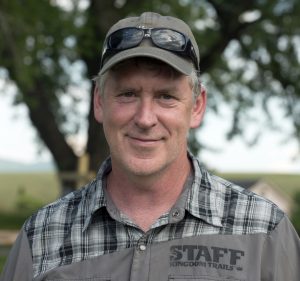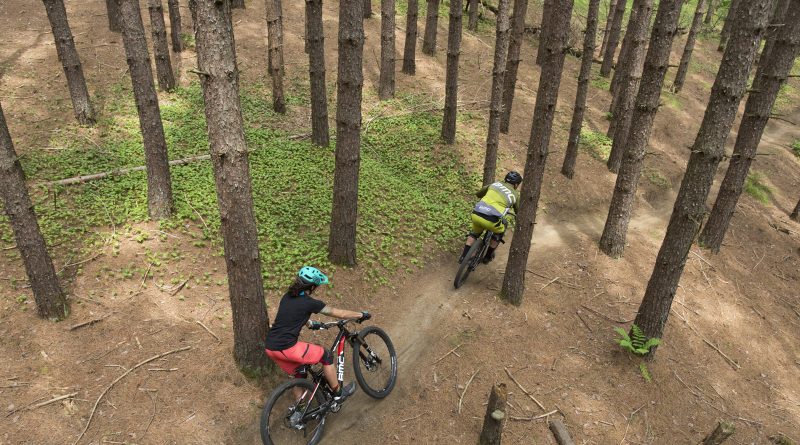A New Use For “Current” Use

By Tim Tierney
A new study puts a value on outdoor recreation in Vermont. It may also help make a case for tax breaks for landowners who host trails.
Two big things happened recently that could impact outdoor recreation. On December 8, 2016, President Obama signed into law the Outdoor Recreation Jobs and Economic Impact Act, which will allow the U.S. Department of Commerce to appraise outdoor recreation’s overall impact to the gross domestic product (GDP). This act legitimizes the outdoor recreation economy. The official statistics will boost the protection, management and importance of public lands across the country.
Vermont, long an outdoor playground for residents and visitors, is home to a myriad of recreational outlets, ranging from small, community-based trail systems to statewide systems. The Long Trail alone has been an accessible retreat for 105 years.
But only a few studies have been conducted to demonstrate the economic impact of certain industries or recreation activities. Snowmobiling in particular has shown its importance to the state’s economy through these impact studies.
On November 29, four organizations (The Green Mountain Club, Catamount Trail Association, Vermont ATV Sportsmen Association and Kingdom Trail Association) announced the results of an economic impact study done via a matching grant from the U.S. Department of Agriculture under the coordination of the Vermont Trails and Greenways Council.
The study was the first for most of these not-for-profit entities which maintain, manage and operate to provide recreational access. The overall economic impact brought by out-of-state visitors for Vermont’s economy totaled over $30 million.
This controlled study, done with out-of-state participants, brought to light accurate figures of spending habits, length of stay and services used. It has sparked interest in gathering more information and will be used as a springboard for a more comprehensive study with all trail-based activities. This, in turn, can give us a more authentic picture of the true statewide impact. The subsequent investigation will also include a detailed account of intrastate spending, second home ownership, and industry retail sales.
Already, the picture painted by our current study reveals that outdoor recreation is a solid leg of Vermont’s economy through job creation and destination development and is a revenue producer.
The hope is that this data will also be a catalyst for a change in perception. If a forest treadway that’s built and maintained with good management practices generates dollars at a local, regional and state level, then one can say that this trail system is a viable forest or agricultural product, grown and nurtured by Vermonters, for Vermonters.
Trails are woven into the fabric of the working landscape and the economic and health benefits just keep growing. The unique aspect is that many of these venues depend on the generosity of private landowners as well as on access to public land.
Vermont has long known the value of its forest and farm land and first passed the use value appraisal program (Current Use) in 1978. Now, about a third of Vermont’s total land area is enrolled in Current Use. The purpose of the law was to allow the valuation and taxation of farm and forest land based on it remaining in agricultural or forest use—instead taxing it based on its value in the market place.
However, there is no current way to offer tax incentives to landowners in Vermont who host trails. Neighboring states Massachusetts, New Hampshire and Maine have Current Use programs that include recreation.
Massachusetts’ Current Use programs were created to give preferential tax treatment to those landowners who maintain their property as open space for the purposes of “timber production, agriculture or recreation.” Taxes for this program are calculated using 25 percent of the current assessed value.
In New Hampshire, Current Use discounts may accrue if a landowner is willing to file a recreational easement permitting the public to come upon the land unimpeded for non-motorized recreation.
Maine has several criteria for Current Use determination, including one for open space whereby a tract must be preserved or restricted in use to provide a public benefit. Benefits recognized include public recreation, scenic resources, game management and wildlife habitat.
At present, Vermont has a statute protecting the landowner’s liability from public use on his or her property. Recently, the state also made it more enticing to donate a permanent conservation easement. For many Vermont landowners it’s a tradition to share their land. For others, it’s a way to help the community and grow their local economy.
Yet change of ownership, increased taxes and land use change always threaten this relationship. Easements are expensive and not always open or practical for trail placement.
Hopefully, these studies will encourage discussion and consideration of ways to encourage increased stewardship and growth of managed outdoor recreational trails.
A certain first step would be to create a simple means to offer a tax incentive for those who provide this public benefit and economic driver. It will be a small investment with a huge return.
Tim Tierney is the executive director of the Kingdom Trails, a non-profit that maintains and promotes a network of more than 100 miles of trails on public and private land in the Northeast Kingdom. Photo by Herb Swanson/Kingdom Trails.

